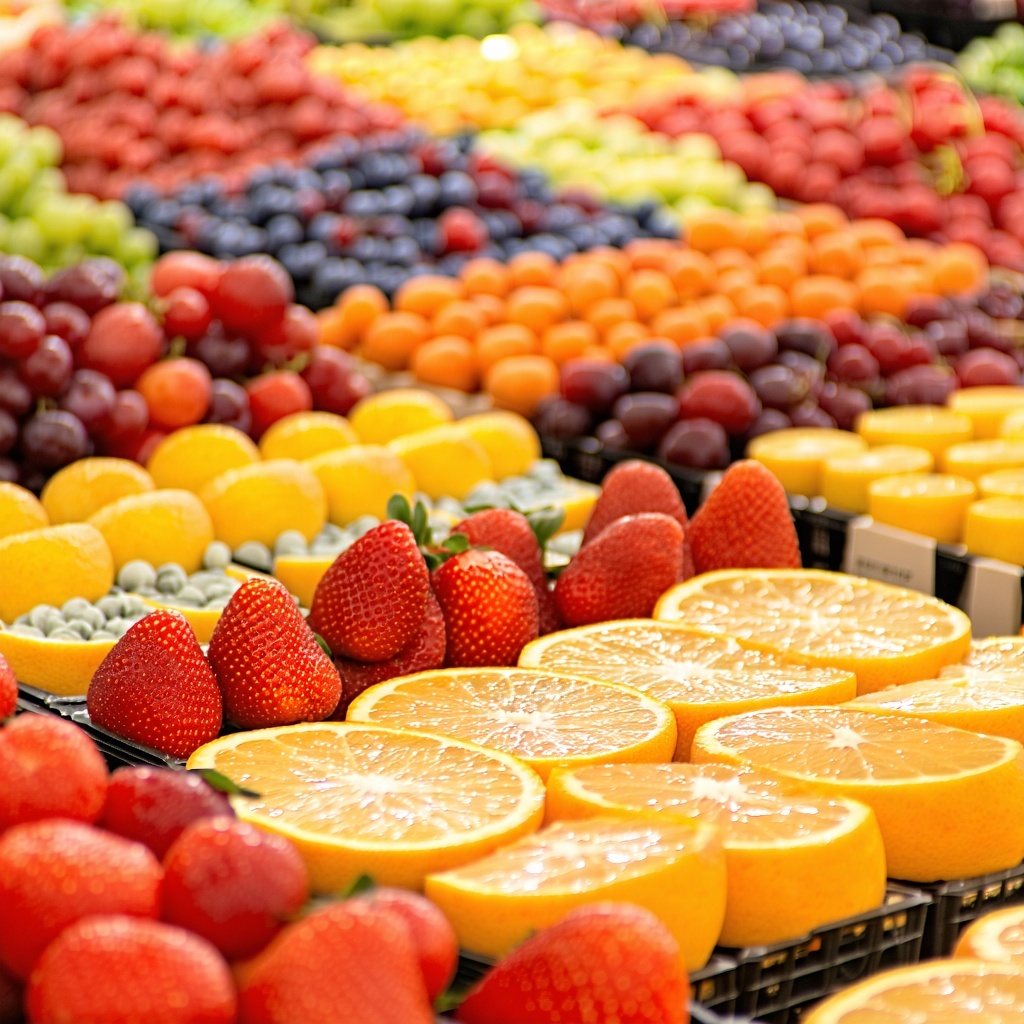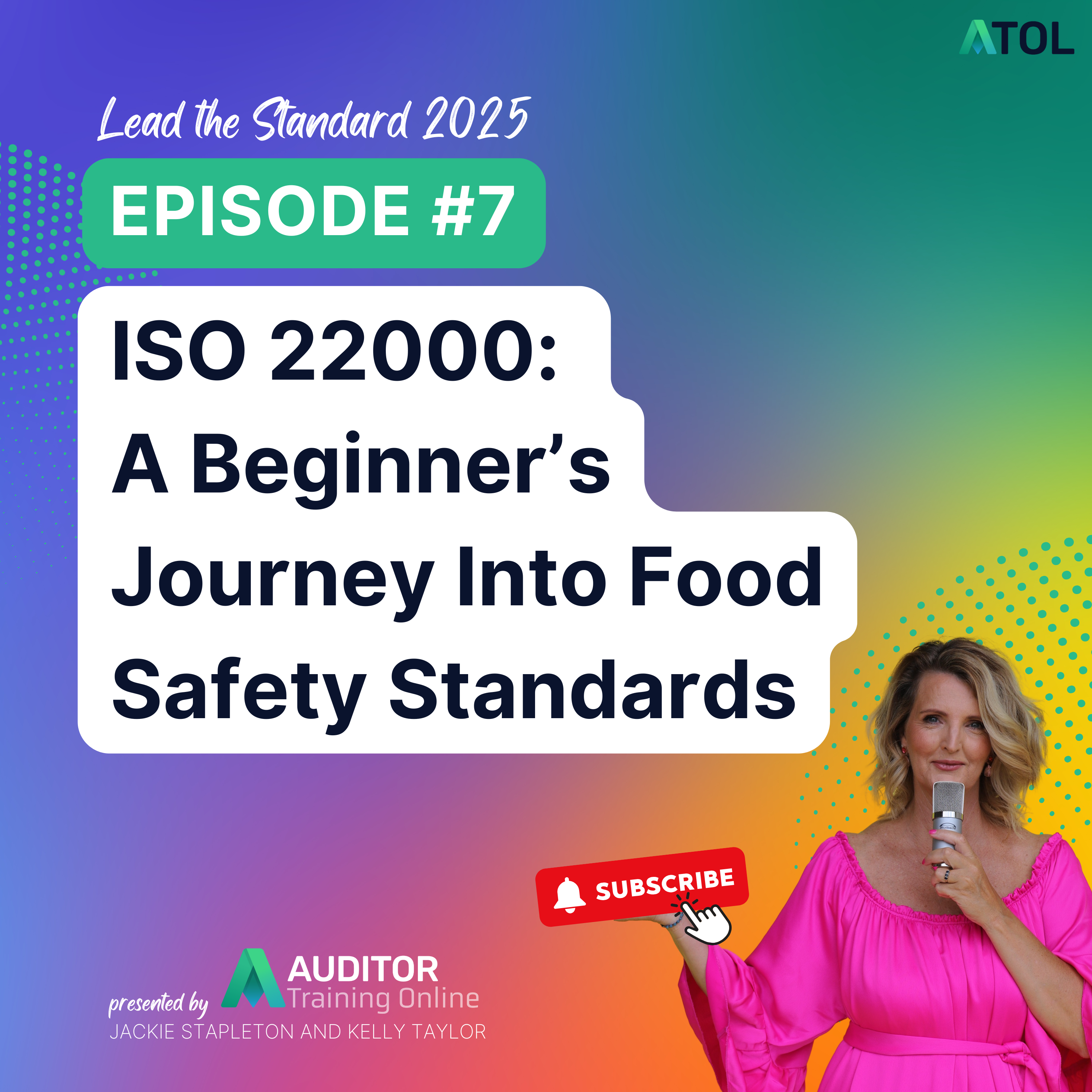ISO 22000: A Beginner's Journey into Food Safety Standards
Food Safety & HACCP • Feb 18, 2025 7:15:00 AM • Author: Jackie Stapleton

Once again I have been given the task to write an article as a Beginner for Beginners, but this time on ISO 22000 Food Safety Management Systems - FSMS. This one actually does scare me, because the only thing about food I know, is that I enjoy eating good food! I don’t enjoy cooking at all, in fact I probably find cleaning up afterwards most rewarding!
So, as I always do as I’m told here is how I see as an experienced ISO 9001, ISO 14001 and ISO 45001 understands or recognises what they would need to learn for ISO 22000.
Now, remember I am looking at this from the perspective of an experienced ISO professional in ISO 9001 (Quality), ISO 14001 (Environment), and ISO 45001 (Occupational Health & Safety) and considering adding ISO 22000 (Food Safety Management Systems - FSMS) to your expertise.
This is like adding a new ingredient to a well-known recipe. While the core Annex SL framework remains familiar, ISO 22000 introduces HACCP principles, food safety hazards, and regulatory compliance—key elements that require a shift in approach. Understanding prerequisite programs (PRPs), critical control points (CCPs), and food supply chain risks will be essential.
Integrating ISO 22000 with existing management systems like ISO 9001 and ISO 14001 within a business can significantly enhance an organization's efficiency and effectiveness.
By aligning food safety management with quality and environmental standards, businesses can streamline processes, reduce redundancies, and foster a culture of continual improvement. The article Integrating ISO 22000 with Other Management Systems (ISO 9001, ISO 14001) is helpful understanding this from a business perspective.

Should You Add ISO 22000 to Your Offering?
Short Answer:
✅ Yes, if:
- You want to expand into the food industry, where food safety compliance is mandatory.
- You are willing to gain HACCP knowledge and understand food safety hazards.
- Your existing clients operate in food manufacturing, packaging, or distribution.
- You have practical experience in the food industry.
🛑 Challenges You May Face:
- If you have no background in food microbiology or HACCP, you may need to build expertise in foodborne pathogens, allergens, and spoilage risks.
- If you are used to working with general industries, adapting to sector-specific food safety requirements may take time.
- Clients in the food sector often have strict supplier control expectations, so supply chain risk management will be a crucial part of ISO 22000 implementation.

Food Safety Management Systems Specialist
AU$1,195.00The Food Safety Management Systems Specialist course provides specialised training in managing food safety within organizations. Participants learn about ISO 22000 standards, hazard analysis, critical control points (HACCP), hygiene practices, and regulatory compliance through online modules. This course equips professionals with practical skills to ensure food safety and maintain quality standards efficiently.
The Essential Fishbone of Food Safety
To successfully transition into ISO 22000, it's important to understand the unique elements that set it apart from other management systems. The Essential Fishbone of Food Safety provides a visual guide to the eight critical components of ISO 22000 implementation. These include the industry-specific focus required for food safety, the integration of HACCP principles, the need for additional prerequisite programs (PRPs), and a thorough understanding of legal and regulatory requirements. It also highlights the importance of supply chain considerations, alignment with Annex SL, certification and market expectations, and the necessary training and competency to ensure effective implementation.
 1. Industry-Specific Focus
1. Industry-Specific Focus
Unlike the generic structure of ISO 9001, 14001, and 45001, ISO 22000 is industry-specific to food safety. It incorporates Hazard Analysis and Critical Control Points (HACCP) principles, which are essential for food safety risk management.
Key Difference: Unlike ISO 9001, which focuses on general quality management, ISO 22000 is designed to prevent foodborne hazards at all stages of the food chain.
What This Means for You: If you haven’t worked in food production, processing, or handling, you may need to develop an understanding of food safety hazards, microbiology, and HACCP.
2. HACCP Integration and Risk Management
ISO 22000 combines the Plan-Do-Check-Act (PDCA) approach with HACCP principles. While you may already be familiar with risk-based thinking from ISO 9001, ISO 14001, and ISO 45001, HACCP has a structured, seven-step process for food safety risk assessment.
Key Difference: HACCP requires you to identify critical control points (CCPs) where controls must be applied to prevent food safety hazards.
What This Means for You: If you haven’t worked with HACCP before, consider gaining knowledge in food safety hazard identification, CCP determination, and validation of control measures.
3. Additional Prerequisite Programs (PRPs)
ISO 22000 requires Prerequisite Programs (PRPs), which are basic conditions and activities that create an environment suitable for food safety.
Examples of PRPs: Cleaning and sanitation, personnel hygiene, pest control, food defence, allergen management, supplier control.
What This Means for You: You need to understand industry-specific Good Manufacturing Practices (GMPs) and food hygiene regulations.
4. Legal and Regulatory Requirements
ISO 22000 aligns with legal and regulatory requirements for food safety. Unlike ISO 9001, which allows organizations to set their own quality objectives, ISO 22000 requires strict compliance with food safety laws.
Key Difference: ISO 22000 is often linked to national and international food safety laws such as:- FSMA (U.S. Food Safety Modernization Act)
- EU Food Safety Regulations
- Australia & NZ Food Standards Code
5. The FSMS Structure – Annex SL Alignment
ISO 22000 follows Annex SL, meaning its structure is aligned with ISO 9001, 14001, and 45001. If you’re already familiar with these, transitioning to ISO 22000 should be easier.
Similarities: Clause structures (context of the organization, leadership, planning, support, operation, performance evaluation, and improvement).
Key Difference: The Operational Control (Clause 8) in ISO 22000 includes HACCP and PRPs, which are unique to food safety.
What This Means for You: If you’re already comfortable with Annex SL, focus on clause 8 (Operation) for key FSMS-specific differences.
6. Supply Chain Considerations – The Food Chain Approach
ISO 22000 covers the entire food supply chain, from farm to fork. This includes food producers, processors, transporters, retailers, and even packaging manufacturers.
Key Difference: Unlike ISO 9001, which focuses on customer satisfaction, ISO 22000 considers the entire food chain and its stakeholders.
What This Means for You: If your clients operate in manufacturing, catering, packaging, or transportation, you need to understand food safety risks across all these sectors.
7. Certification and Market Expectations
Many food businesses seeking certification will also require compliance with GFSI (Global Food Safety Initiative) recognized standards like:
- FSSC 22000 (Food Safety System Certification)
- BRCGS (British Retail Consortium Global Standard)
- SQF (Safe Quality Food)
Key Difference: ISO 22000 is not GFSI-recognized, but FSSC 22000 is, which may be the preferred choice for food industry clients.
What This Means for You: If your clients need a GFSI-recognized certification, FSSC 22000 might be a better option than standalone ISO 22000.
8. Training and Competency Requirements
To effectively consult or audit against ISO 22000, you may need additional training in:
- HACCP principles
- Food safety hazards and microbiology
- Food hygiene and good manufacturing practices
- ISO 22000 lead auditor or lead implementer training
What This Means for You: Consider getting a recognized food safety qualification or HACCP certification to boost your credibility in this area.
/HACCP%20%2B%20Lead%20Auditor.jpg?width=700&name=HACCP%20%2B%20Lead%20Auditor.jpg)
Lead Auditor Management Systems plus Developing HACCP Plans
AU$1,895.00The Lead Auditor plus Developing HACCP Plans course is an online, self-paced program designed to certify participants as Lead Auditors and HACCP Practitioners. It covers external audit techniques and HACCP system requirements, equipping learners with the skills to conduct audits and improve food safety management systems.
Best Next Steps:
- Enrol in an ISO 22000 Lead Auditor Course.
- Enrol in a HACCP course.
- Connect with food safety professionals or consultants to learn from their experience.


